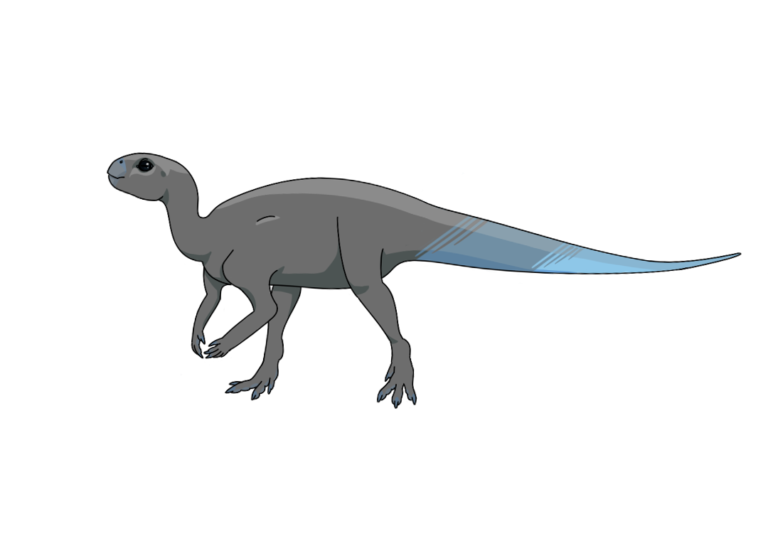
Convolosaurus marri is an early type of ornithopod, a group of dinosaurs known as “duck-bills.” The first ornithopods were plant-eaters with small bodies, slender limbs, and birdlike feet that gave them an edge to outrun predators.
In 1985, a huge graveyard of these dinosaurs was discovered in Texas near Proctor Lake. From 488 fossils, scientists identified at least twenty-nine adults and juveniles buried in the same ancient floodplain. Some of those bones were even found in articulation, meaning that instead of lying scattered and unorganized, they were preserved as a skeleton.
With so many fossils to work with, paleontologists have a very clear picture of this dinosaur. Convolosaurus had a beak and grinding teeth for eating plants. It stood on two legs, leaving its front paws free. The largest specimen is about eight feet long with a body roughly the size of a Labrador, but scientists don’t believe it was completely finished growing. Convolosaurus’ full size is still uncertain.
Many Convolosaurus fossils were found in clusters. For example, in one area only five by two-and-a-half feet wide, paleontologists uncovered the bones of at least eleven juveniles buried together in a depression. The hollow could just be empty space left behind when the young dinosaurs’ bodies decayed. However, it’s very probable that this hole could have been intentionally created to cradle hatchlings. In fact, many similar depressions, each holding the bones of more juvenile Convolosaurus, were found in the same area. Though no eggshells have been found, paleontologists wonder if this bed of bones may have once been a nesting site where Convolosaurus gathered to raise their young alongside each other for protection. From the way bones are grouped outside of these supposed nests, it seems these dinosaurs also grazed in herds. When the species was officially named in 2019, it was dubbed the “flocking lizard.”
Strangely, paleontologists found very few other animal remains at the site. Did Convolosaurus’ strength in numbers push other animals out of the area, or did they just happen to luck into a safe haven? Did lack of competition draw them there, or did they stick around for fresh water and food?
For now, how this floodplain became a Convolosaurus kingdom is an unsolved mystery. But the Proctor Lake dig did make one thing about these little dinosaurs clear—they do move in herds!
Convolosaurus’ debut paper:
Research about Convolosaurus’ flocking and possible nesting:
meet convolosaurus
Convolosaurus marri appears in Chapters 5, 6, 7, and 9 of Cecelia and the Living Fossils.
Teenage necromancer + dinosaur bones. What could go wrong? See for yourself.
